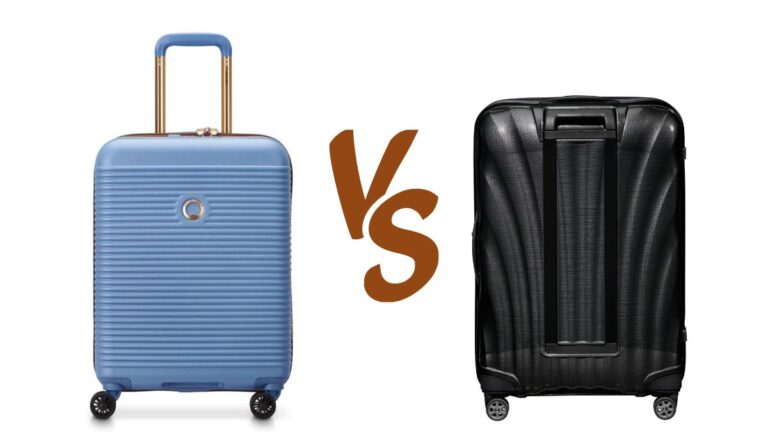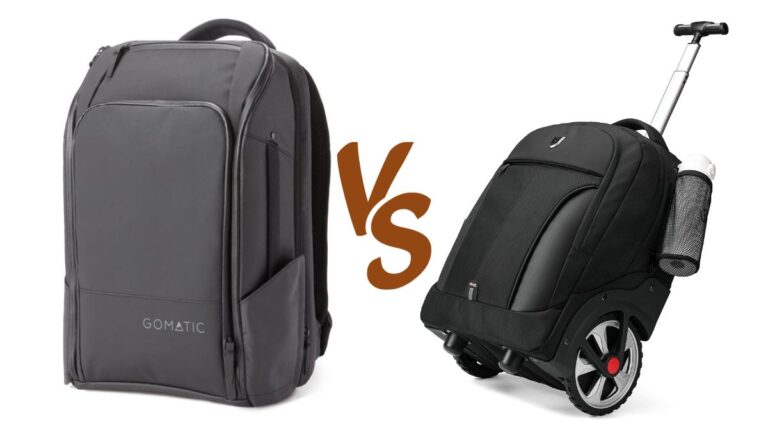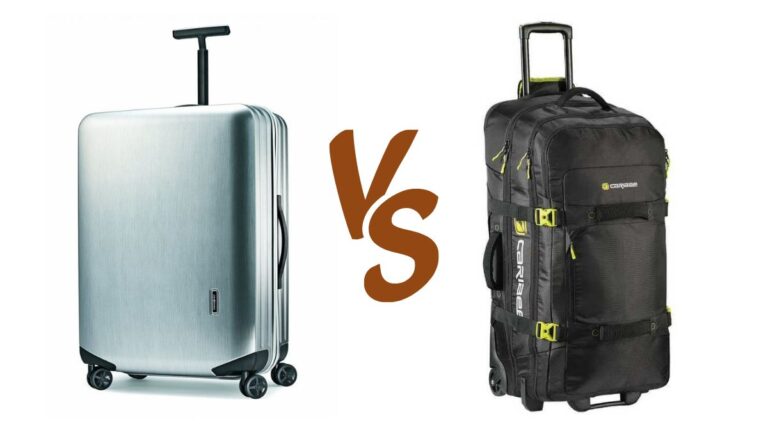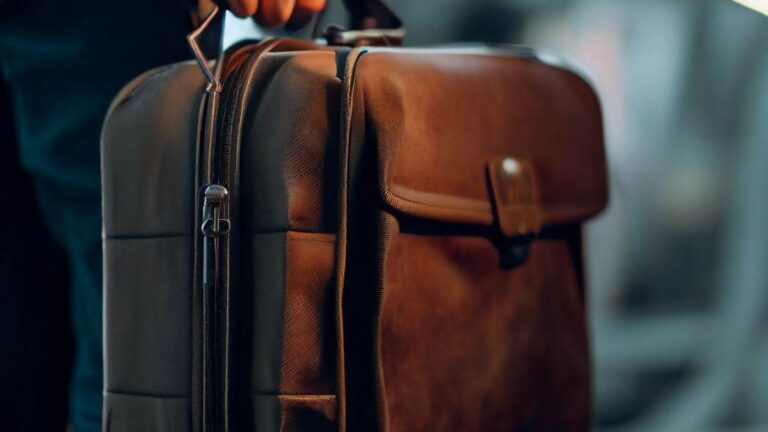Do Airlines Weigh Carry-On Bags? (& How Strict They Are)
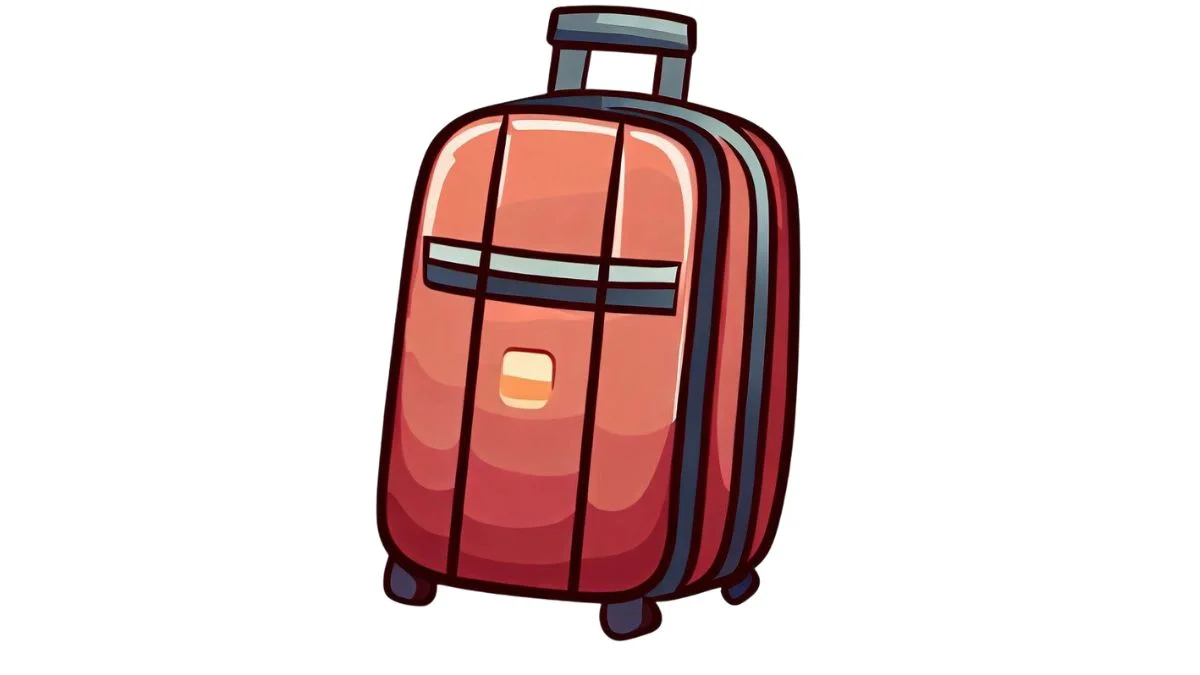
As participants in Amazon Associates and other programs, we earn from qualifying purchases. This comes at no additional cost to you. For more details, see our Affiliate Disclosure.
When packing for a trip, one question that often comes to mind is, ‘Do airlines weigh carry-on bags?’ It’s a common concern for travelers trying to avoid extra fees or the hassle of checking a bag at the last minute. Whether you’re a seasoned jet-setter or a first-time flyer, understanding how strict airlines are about the weight of carry-on luggage can make your travel experience smoother and more enjoyable.
In this article, we’ll explore the policies of various airlines and provide helpful insights to guide you through your next journey.
Understanding Carry-On Bag Policies
Carry-on bags are essential items that passengers are allowed to bring into the airplane’s cabin, often containing essentials like travel documents, medications, and personal items.
The guidelines for these bags, including weight and size restrictions, vary between airlines but generally adhere to common limits, such as a weight range of 15 to 22 pounds and dimensions of 22 x 14 x 9 inches. Many airlines also allow an additional smaller personal item, and rules regarding content (such as restrictions on liquids and sharp objects) exist for security reasons.
It’s vital to recognize that specific carry-on policies can differ significantly between various airlines, with budget airlines often imposing stricter rules, and premium carriers providing more generous allowances.
International flights might have different standards compared to domestic ones, and understanding these policies is crucial to avoid unexpected fees and delays, contribute to a smoother boarding process, and ensure the overall safety and comfort of all passengers.
Weight Limits Across Different Airlines
Weight limits for carry-on bags vary across different airlines and can be influenced by factors such as class of travel, membership status, and even the destination.
Understanding the specific weight limitations of the airline you are flying with can save you from unexpected surprises at the airport. Below, we’ll explore the carry-on weight policies of some of the most popular airlines.
American Airlines
American Airlines typically allows carry-on bags to weigh up to 22 pounds for Economy class passengers. The airline emphasizes size more than weight, and as long as the carry-on fits within the required dimensions, passengers usually face no issues.
Delta Air Lines
Delta’s carry-on weight limit can vary, particularly on international routes. Generally, there is no specific weight limit for carry-ons on domestic flights, but on international routes, limits might range from 15 to 22 pounds, depending on the destination and class of travel.
United Airlines
United Airlines enforces a strict carry-on weight limit of 18 pounds for Economy class passengers. For Business and First Class passengers, the weight limit can go up to 22 pounds, providing a little more flexibility for those purchasing premium tickets.
Southwest Airlines
Southwest Airlines prioritizes the size of carry-on bags over weight. As such, they do not explicitly state a weight limit for carry-on luggage, focusing instead on the dimensions. As long as the bag fits the size restrictions, weight is typically not an issue.
British Airways
British Airways has a carry-on weight limit of 23 pounds for Economy class passengers, offering a bit more leeway compared to some U.S. carriers. Club World and First Class passengers enjoy an even higher limit, at 51 pounds.
Lufthansa
Lufthansa imposes a carry-on weight limit of 17 pounds for Economy and Premium Economy passengers. Business and First Class passengers have more generous allowances, with limits of 26 pounds.
Air France
Air France’s carry-on weight limits are 26 pounds for Economy class passengers and 40 pounds for Business and First Class passengers, showcasing a significant difference based on the class of travel.
Here’s a summarizing table of the weight limits for carry-on bags across these major airlines:
| Airline | Weight Limit (Economy) | Weight Limit (Business/First) |
|---|---|---|
| American Airlines | 22 lbs | Varies |
| Delta Air Lines | Varies | 15-22 lbs (Int’l) |
| United Airlines | 18 lbs | 22 lbs |
| Southwest Airlines | No Specific Limit | No Specific Limit |
| British Airways | 23 lbs | 51 lbs |
| Lufthansa | 17 lbs | 26 lbs |
| Air France | 26 lbs | 40 lbs |
Always check the specific airline’s website for the most accurate and up-to-date information, as these numbers may vary depending on factors like the route and aircraft type.
Size Matters Too: Dimensions and Other Factors
While weight is a significant factor in determining whether a carry-on bag meets an airline’s requirements, the size or dimensions of the bag can be equally, if not more, important.
Airlines usually specify maximum dimensions for carry-on luggage to ensure that bags can fit in the overhead compartments or under the seat. Here’s an overview of how size matters in the context of carry-on bags, including dimensions and other related factors:
Dimensions Overview
Most airlines have specific dimensions for carry-on bags, commonly around 22 x 14 x 9 inches, including handles and wheels. These dimensions are carefully chosen to match the size of overhead compartments in standard airplanes. Bags exceeding these dimensions might have to be checked, possibly incurring additional fees.
Wheels and Handles
The inclusion of wheels and handles in the size measurement can catch travelers off guard. Even if the bag itself fits within the required dimensions, protruding wheels or handles can cause it to exceed the allowed size. Travelers should choose bags with these factors in mind.
Personal Items
In addition to the main carry-on bag, passengers are often allowed a personal item like a purse, laptop bag, or small backpack. This item must fit under the seat in front of the passenger and usually has separate, smaller dimensions. Personal items are also subject to their size restrictions and must adhere to airline guidelines.
International Differences
Just like weight limits, size restrictions can vary internationally. Different countries, regions, and airlines may have distinct size requirements for carry-on luggage. Being aware of these differences is essential for international travelers.
Flexibility in Enforcement
Enforcement of size restrictions may vary. Some airlines are very strict and measure every bag, while others might be more lenient. Travelers should always plan for the stricter scenario to avoid potential inconvenience.
Why Size Matters
Size limitations ensure that all passengers have fair access to overhead compartment space and maintain safety and comfort within the cabin. Oversized bags can block aisles, cause delays in boarding and disembarking, and pose safety risks during turbulence.
Penalties and Fees for Overweight Bags
Airline regulations on baggage weight and size are more than mere guidelines; they play a crucial role in maintaining safety and efficiency on flights. When a carry-on bag exceeds the weight or size limits imposed by an airline, there may be penalties and fees involved.
Understanding these potential consequences is essential for travelers wishing to avoid unexpected costs and inconvenience at the airport. Below, we’ll explore the common penalties and fees associated with overweight or oversized carry-on bags.
Overweight Bag Fees
When a carry-on bag exceeds the weight limit, airlines typically charge a fee to check the bag. This fee can vary widely between airlines and may also depend on the destination and class of travel. It is often more expensive than if the traveler had initially planned to check the bag, making awareness of weight limits a key consideration when packing.
Oversize Bag Penalties
Similarly, if a bag exceeds the allowed dimensions, it may have to be checked. Oversize bag fees can be hefty and are usually applied at the gate. This not only adds unexpected costs but can also lead to delays for the traveler as they navigate the check-in process at the last minute.
Gate Checking
If a bag is deemed too large or heavy at the gate, it may be gate-checked. This means the bag is taken by airline staff and placed in the cargo hold with checked luggage. While this is sometimes done at no charge, fees may apply, especially if the bag is significantly over the limit.
Potential for Denied Boarding
In extreme cases, failure to comply with the airline’s baggage policy, including refusal to pay necessary fees, could result in denied boarding. This can be a serious inconvenience, potentially leading to missed flights and significant disruptions to travel plans.
Impact on Other Passengers
Overweight or oversized carry-on bags can affect other passengers as well. They may take up excess space in overhead compartments, leading to delays in boarding and frustration among fellow travelers. Being mindful of size and weight limits is also a matter of courtesy to others on the flight.
Avoiding Penalties and Fees
The best way to avoid unexpected penalties and fees is to be aware of the airline’s specific carry-on bag policies and pack accordingly. Many airlines provide clear guidelines on their websites, and some even offer baggage sizers at the airport to check dimensions before reaching the gate. Investing in luggage that fits standard carry-on size and weight limits and carefully considering what to pack can save both time and money.
Packing Tips for Staying Within Limits
Staying within the carry-on weight and size limits set by airlines is an essential aspect of smooth and stress-free travel. Proper packing not only helps you avoid unexpected fees and delays but also contributes to a more organized and enjoyable journey. Here’s a concise guide to help you pack wisely and stay within those prescribed limits:
- Know Your Airline’s Specific Rules: Familiarize yourself with the exact weight and size limits for your specific airline. Different airlines have different rules, so always refer to the official guidelines provided on their website.
- Choose the Right Bag: Opt for a lightweight and appropriately sized carry-on bag. Look for bags designed for air travel, with compartments and features that make packing more efficient.
- Pack Only Essentials: Focus on essential and versatile items. Packing unnecessary duplicates or items you don’t truly need can quickly consume weight and space.
- Use Packing Cubes and Organizers: Utilizing packing cubes and organizers helps compress items and maximize space. It also keeps your belongings organized and easy to access.
- Weigh Your Bag Before Leaving: A luggage scale at home can save you from surprises at the gate. Weighing your bag beforehand ensures you know exactly where you stand.
- Utilize Personal Items Wisely: Your personal item allowance, such as a purse or laptop bag, can be strategically used for heavier essentials, helping you stay within the carry-on weight limit.
- Be Mindful of Liquid Restrictions: Adhering to liquid restrictions by packing containers of 3.4 ounces or less helps you pack more efficiently and align with security requirements.
- Consider Laundry Options: Packing with the intention of doing laundry at your destination can reduce the overall weight of your luggage, especially for longer trips.
- Leave Room for Souvenirs: If you plan to shop at your destination, make sure to leave space and weight allowance for those extra items.
- Adopt a Minimalist Mindset: Embracing a minimalist approach, focusing on quality over quantity, not only helps you stay within limits but also enhances your travel experience.
By adhering to these straightforward packing tips, travelers can navigate the challenges of weight and size restrictions with confidence, ensuring a more streamlined and pleasurable travel experience.
Navigating Airport Security and Check-In
Navigating airport security and check-in can be a stressful experience for many travelers, but understanding the process and preparing in advance can make it much more manageable.
The check-in process begins with confirming your flight, choosing a seat if you haven’t already, and printing or downloading your boarding pass. If you have luggage to check, you’ll need to proceed to the designated airline counter. Travelers with only carry-on bags may be able to proceed directly to security. Many airlines offer online check-in and mobile boarding passes, streamlining this process and allowing you to bypass long lines.
At the security checkpoint, having your identification and boarding pass ready is key to keeping the line moving smoothly. Be aware of the requirements regarding liquids and electronics. Liquids must be in containers of 3.4 ounces or less and placed in a clear, quart-sized bag. Laptops and other large electronics usually need to be removed from bags and placed in separate bins.
Your carry-on luggage will play a significant role in how quickly you move through security. Keeping items organized, understanding what needs to be removed (such as shoes, belts, or jackets), and following the instructions of the security personnel can all contribute to a more efficient experience.
Travelers should also be aware of any specific regulations or changes that might affect their journey, such as new security measures or temporary restrictions related to current events. Checking the Transportation Security Administration (TSA) website or your airline’s specific guidelines before your trip can provide valuable insights.
Once through security, you’ll head to your gate. It’s wise to find your gate first and then explore shops or restaurants if you have time. Keeping an eye on the departure boards and listening for announcements will ensure that you don’t miss any updates or changes to your flight’s departure time or gate.
Finally, boarding the plane is usually done by group or row number, and your boarding pass will have this information. Having it ready, along with your identification if required, will expedite this last stage of the process.

